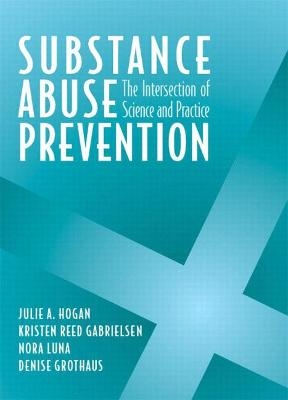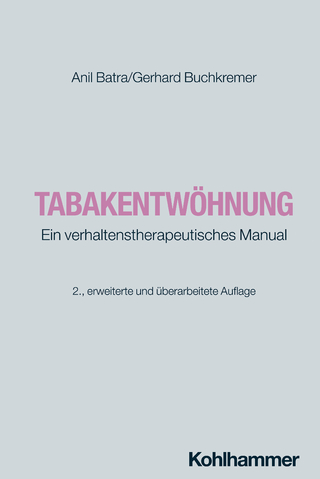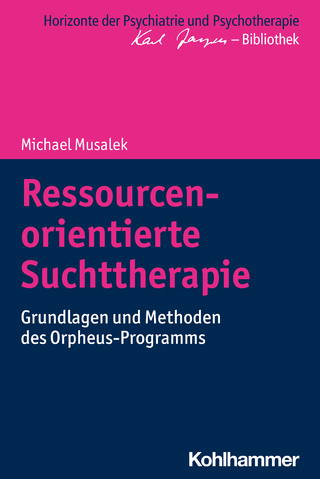
Substance Abuse Prevention
Pearson (Verlag)
978-0-205-34162-7 (ISBN)
This text teaches students about the science-based components of substance abuse prevention practice. This cutting-edge book responds to the growing need for a textbook that addresses the rapid development of the substance abuse prevention profession. Finally, professors have a text that supports the content of their prevention courses! Substance Abuse Prevention presents the most current knowledge in the field, analyzing what does and doesn't work in the implementation of prevention programs. The text also prepares students for the successful completion of the ICRC examination.
1. Introduction —Julie Hogan.
Evolution and Training of the Preventative Discipline.
Attitudes about Alcohol, Tobacco, and other Drugs.
Definitions of Use, Abuse, and Dependence/Addiction.
Justification for Theory.
United States History of Substance Abuse Prevention.
A Timeline of Prevention.
Building Blocks for the Prevention Profession.
2. Prevention Research—Julie Hogan.
The Risk and Protective Factor Theory.
The Resiliency Approach.
The Developmental Assets Approach.
The Six CSAP Strategies.
3. Prevention Program Planning—Kristen Reed Gabrielson.
Step 1: Asses the Readiness of the Community and Mobilize for Action.
Step 2: Assess the Levels of Risk Factors and Protective Factors in the Community.
Step 3: Translate Data into Priorities.
Step 4: Examine the Resources in the Community that are Reducing Risk Factors.
Step 5: Select a Target Population.
Step 6: Apply “Best Practices” and “Guiding Principles.”
Step 7: Evaluate.
4. Facts about Drugs— Nora Luna.
Models of Addiction.
Central Nervous System Depressants.
Opiates.
Central Nervous Stimulants.
Hallucinogens.
Cannabinols.
Steroids.
Inhalants.
Gateway Drugs.
Trends in Drug Use.
5. The Cultural Context and Ethics of Prevention—Denise Grothaus.
Culture Defined.
Elements of Culture.
Types of Culture.
Cultural Competence.
Working in the Community.
Ethics in Prevention.
6. Incorporating Human Development Theory into Prevention—Denise Grothaus.
Abraham Maslows Hierarchy of Needs.
Erik Eriksons Psychosocial Developmental Stages.
Jean Piagets Cognitive-Developmental Stages.
Medicine Wheel.
7. The Media and Prevention—Nora Luna.
Media Advocacy.
Media Literacy.
Social Marketing.
8. The Logic Model and Evaluation—Kristen Reed Gabrielson.
Logic Model.
Developing Evaluation Questions.
Internal or External Evaluations?
Developing a Design to Answer Evaluation Questions.
Developing Methods to Carry out the Evaluation Design.
Analyzing Evaluation Data.
Conducting the Evaluation.
Using the Answers to the Evaluation Questions.
9. Communication Strategies—Julie Hogan.
Communication Models.
Listening.
Public Speaking Skills.
Group Facilitation and Leadership Skills.
Leadership Skills.
10. Grant Writing—Kristen Reed Gabrielson.
Introduction to Grant Writing in Prevention.
Motivations of Grant Makers.
Preliminary Steps to Grant Writing.
Writing Shorter Letter Proposals.
Writing Long Proposals.
General Grant-Writing Tips.
What Happens Next?
11. Bringing it all Together—Julie Hogan.
Challenges in Applying Science-Based Prevention Principles to Prevention Programs.
Chapter Summary.
Grant Applications.
Discussion.
Appendix A: Community Readiness Survey.
Appendix B: Validated Archival Indicators.
Appendix C: Three Case Studies in Prevention.
Appendix D: Case Studies in Prevention. Closing the Gap Between Research and Practice: Lessons of the First Three Years of CSAPs National CAPT System 1997-2000.
| Erscheint lt. Verlag | 19.8.2003 |
|---|---|
| Sprache | englisch |
| Maße | 10 x 10 mm |
| Gewicht | 770 g |
| Themenwelt | Sachbuch/Ratgeber ► Gesundheit / Leben / Psychologie |
| Kinder- / Jugendbuch ► Sachbücher | |
| Geisteswissenschaften ► Psychologie ► Sucht / Drogen | |
| Naturwissenschaften | |
| Sozialwissenschaften ► Pädagogik | |
| Sozialwissenschaften ► Soziologie | |
| ISBN-10 | 0-205-34162-4 / 0205341624 |
| ISBN-13 | 978-0-205-34162-7 / 9780205341627 |
| Zustand | Neuware |
| Informationen gemäß Produktsicherheitsverordnung (GPSR) | |
| Haben Sie eine Frage zum Produkt? |
aus dem Bereich


